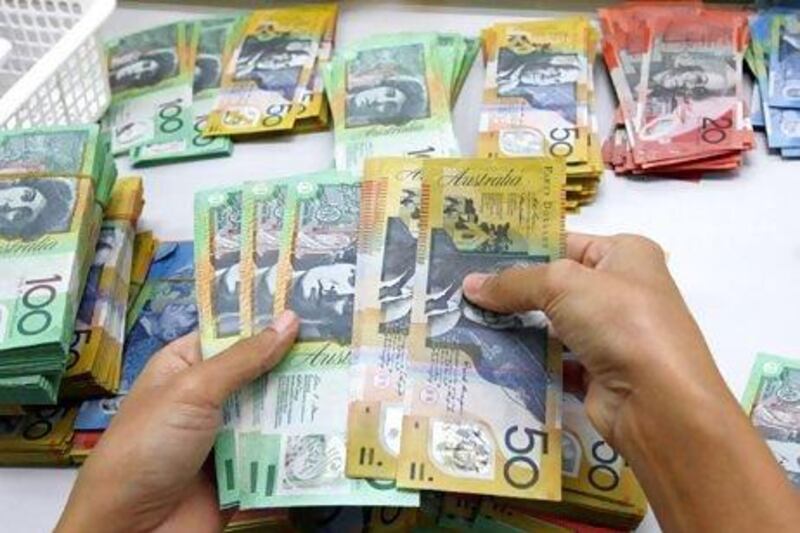The Australian dollar will fall below its American equivalent this year as a slowing economy and less bond buying by the United States Federal Reserve narrow Australia's yield advantage, according to the currency's most-accurate forecaster.
The so-called Aussie will weaken to 99 US cents by December 31, from $1.0484 as of midday trading in Sydney yesterday, according to Bank of New Zealand, which had the lowest margin of error at 2.69 per cent in the past six quarters as tracked by Bloomberg Rankings. The lender is a unit of the Melbourne-based National Australia Bank (NAB).
Ten-year yields are near a seven-week low relative to US Treasuries with swap-market traders betting the Reserve Bank of Australia will cut its 3 per cent overnight cash-rate target to a record by March to help the economy as resources investment slows
Minutes from the Fed's December meeting showed officials expect a probable 2013 end to US$85 billion a month of bond buying that has weakened the greenback.
"Aussie weakness is more a function of the US dollar finding its feet, more so than it being subject to specific weakness of its own," said Ray Attrill, the Sydney-based global co-head of currency strategy at NAB. Still, economic "weakness has become more broad-based in Australia", he added.
The Aussie's top five forecasters are divided on the currency's path for this year.
The currency rose 1.8 per cent last year to US$1.0394, beating strategists' forecast it would decline to $1.01. That advance followed a 45 per cent jump over the previous three years.
It touched 95.82 US cents on June 1, the lowest since October 5, 2011, and one of just 28 days last year it was below parity. The currency first traded above the US currency on October 15, 2010.
* Bloomberg News






